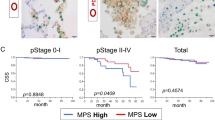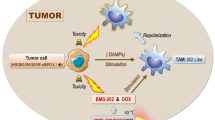Abstract
To fight cancer at its roots by targeting cancer stem cells is a promising approach for therapy. Previously, an indolylquinoline derivative, 3-((7-ethyl-1H-indol-3-yl)-methyl)-2-methylquinoline (EMMQ), was reported effectively inhibiting the growth of lung cancer cells through impairment of cellular mitochondria functions. To address more on drug efficiency, the study further exploited if EMMQ can impede the propagation of tumorspheres stemmed from non-small cell lung cancer cells. EMMQ inhibited proliferation of spheroids in culture. In animal models, administration of the drug attenuated the spheroid tumorigenicity. The activated apoptosis alleviated growth of xenograft tumors in immune-deficient mice as established by the enriched tumorspheres. More evidence suggested that the reduced stemness of the spheroid tumors is attributed to apoptotic death. The findings supported that EMMQ is an eligible approach to eradicate the minor but tumorigenic lung cancer tumorspheres.







Similar content being viewed by others
Abbreviations
- ABCG2:
-
ATP-binding cassette subfamily G member 2
- ALDH1A1:
-
Aldehyde dehydrogenase 1A1
- BrdU:
-
Bromodeoxyuridine
- BSA:
-
Bovine serum albumin
- CSCs:
-
Cancer stem-like cells
- DMSO:
-
Dimethyl sulfoxide
- DAPI:
-
4′,6-diamidino-2-phenylindole
- EMMQ:
-
3-((7-ethyl-1H-indol-3-yl)-methyl)-2-methylquinoline
- FBS:
-
Fetal bovine serum
- FITC:
-
Fluorescein isothiocyanate
- NSCLC:
-
Non-small cell lung cancer
- PARP:
-
Poly(adenosine diphosphate ribose) polymerase
- PBS:
-
Phosphate-buffered saline
- PCNA:
-
Proliferating cell nuclear antigen
- TRITC:
-
Tetramethylrhodamine isocyanate
- TUNEL:
-
Terminal deoxynucleotidyl transferase-mediated dUTP nick-end labeling
References
Jemal A, Siegel R, Ward E, Murray T, Xu J, Smigal C, Thun MJ (2006) Cancer statistics, 2006. CA Cancer J Clin 56(2):106–130
Blanco R, Maestu I, de la Torre MG, Cassinello A, Nunez I (2015) A review of the management of elderly patients with non-small-cell lung cancer. Ann Oncol 26(3):451–463. doi:10.1093/annonc/mdu268
Ferlay J, Soerjomataram I, Dikshit R, Eser S, Mathers C, Rebelo M, Parkin DM, Forman D, Bray F (2015) Cancer incidence and mortality worldwide: sources, methods and major patterns in GLOBOCAN 2012. Int J Cancer 136(5):E359–E386. doi:10.1002/ijc.29210
Eramo A, Lotti F, Sette G, Pilozzi E, Biffoni M, Di Virgilio A, Conticello C, Ruco L, Peschle C, De Maria R (2007) Identification and expansion of the tumorigenic lung cancer stem cell population. Cell Death Differ 15(3):504–514
Miyata T, Yoshimatsu T, So T, Oyama T, Uramoto H, Osaki T, Nakanishi R, Tanaka F, Nagaya H, Gotoh A (2015) Cancer stem cell markers in lung cancer. Pers Med Univ 4:40–45. doi:10.1016/j.pmu.2015.03.007
MacDonagh L, Gray SG, Breen E, Cuffe S, Finn SP, O’Byrne KJ, Barr MP (2016) Lung cancer stem cells: the root of resistance. Cancer Lett 372(2):147–156. doi:10.1016/j.canlet.2016.01.012
Cojoc M, Mäbert K, Muders MH, Dubrovska A (2015) A role for cancer stem cells in therapy resistance: cellular and molecular mechanisms. Semin Cancer Biol 31:16–27. doi:10.1016/j.semcancer.2014.06.004
Liang D, Dong M, Hu LJ, Fang ZH, Xu X, Shi EH, Yang YJ (2013) Hiwi knockdown inhibits the growth of lung cancer in nude mice. Asian Pac J Cancer Prev 14(2):1067–1072
Hu Z, Xu J, Cheng J, McMichael E, Yu L, Carson WE III (2017) Targeting tissue factor as a novel therapeutic oncotarget for eradication of cancer stem cells isolated from tumor cell lines, tumor xenografts and patients of breast, lung and ovarian cancer. Oncotarget 8(1):1481–1494. doi:10.18632/oncotarget.13644
Singh S, Chellappan S (2014) Lung cancer stem cells: molecular features and therapeutic targets. Mol Aspects Med 39:50–60. doi:10.1016/j.mam.2013.08.003
Leon G, MacDonagh L, Finn SP, Cuffe S, Barr MP (2016) Cancer stem cells in drug resistant lung cancer: targeting cell surface markers and signaling pathways. Pharmacol Ther 158:71–90. doi:10.1016/j.pharmthera.2015.12.001
Signore M, Ricci-Vitiani L, De Maria R (2013) Targeting apoptosis pathways in cancer stem cells. Cancer Lett 332(2):374–382. doi:10.1016/j.canlet.2011.01.013
Liu CY, Wu PT, Wang JP, Fan PW, Hsieh CH, Su CL, Chiu CC, Yao CF, Fang K (2015) An indolylquinoline derivative promotes apoptosis in human lung cancer cells by impairing mitochondrial functions. Apoptosis 20(11):1471–1482. doi:10.1007/s10495-015-1165-6
Kim SH, Liu CY, Fan PW, Hsieh CH, Lin HY, Lee MC, Fang K (2016) The aqueous extract of Brucea javanica suppresses cell growth and alleviates tumorigenesis of human lung cancer cells by targeting mutated epidermal growth factor receptor. Drug Des Dev Ther 10:3599–3609. doi:10.2147/DDDT.S117443
Zhao W, Luo Y, Li B, Zhang T (2016) Tumorigenic lung tumorospheres exhibit stem-like features with significantly increased expression of CD133 and ABCG2. Mol Med Rep. doi:10.3892/mmr.2016.5524
Barr MP, Gray SG, Hoffmann AC, Hilger RA, Thomale J, O’Flaherty JD, Fennell DA, Richard D, O’Leary JJ, O’Byrne KJ (2013) Generation and characterization of cisplatin-resistant non-small cell lung cancer cell lines displaying a stem-like signature. PLoS ONE 8(1):e54193. doi:10.1371/journal.pone.0054193
Suresh R, Ali S, Ahmad A, Philip PA, Sarkar FH (2016) The role of cancer stem cells in recurrent and drug-resistant lung cancer. Adv Exp Med Biol 890:57–74. doi:10.1007/978-3-319-24932-2_4
Lee G, Hall RR, Ahmed AU (2016) Cancer stem cells: cellular plasticity, niche, and its clinical relevance. J Stem Cell Res Ther 6(10):363. doi:10.4172/2157-7633.1000363
Rich JN, Bao S (2007) Chemotherapy and cancer stem cells. Cell Stem Cell 1(4):353–355. doi:10.1016/j.stem.2007.09.011
Huang YJ, Hsu SH (2014) Acquisition of epithelial-mesenchymal transition and cancer stem-like phenotypes within chitosan-hyaluronan membrane-derived 3D tumor spheroids. Biomaterials 35(38):10070–10079. doi:10.1016/j.biomaterials.2014.09.010
Hashida S, Yamamoto H, Shien K, Miyoshi Y, Ohtsuka T, Suzawa K, Watanabe M, Maki Y, Soh J, Asano H, Tsukuda K, Miyoshi S, Toyooka S (2015) Acquisition of cancer stem cell-like properties in non-small cell lung cancer with acquired resistance to afatinib. Cancer Sci 106(10):1377–1384. doi:10.1111/cas.12749
Park E, Park SY, Sun PL, Jin Y, Kim JE, Jheon S, Kim K, Lee CT, Kim H, Chung JH (2016) Prognostic significance of stem cell-related marker expression and its correlation with histologic subtypes in lung adenocarcinoma. Oncotarget 7(27):42502–42512. doi:10.18632/oncotarget.9894
Liu CY, Hsieh CH, Kim SH, Wang JP, Ni YL, Su CL, Yao CF, Fang K (2016) An indolylquinoline derivative activates DNA damage response and apoptosis in human hepatocellular carcinoma cells. Int J Oncol 49(6):2431–2441. doi:10.3892/ijo.2016.3717
Cicalese A, Bonizzi G, Pasi CE, Faretta M, Ronzoni S, Giulini B, Brisken C, Minucci S, Di Fiore PP, Pelicci PG (2009) The tumor suppressor p53 regulates polarity of self-renewing divisions in mammary stem cells. Cell 138(6):1083–1095. doi:10.1016/j.cell.2009.06.048
Wang Y-H, Scadden DT (2015) Harnessing the apoptotic programs in cancer stem-like cells. EMBO Rep 16(9):1084–1098. doi:10.15252/embr.201439675
Huang C, Zhang XM, Tavaluc RT, Hart LS, Dicker DT, Wang W, El-Deiry WS (2009) The combination of 5-Fluorouracil plus p53 pathway restoration is associated with depletion of p53-deficient or mutant p53-expressing putative colon cancer stem cells. Cancer Biol Ther 8(22):2186–2193
Acknowledgements
The work is supported in part by grants from Ministry of Science and Technology, Executive Yuan, Taiwan (MOST-103-2311-B-003-001-) and National Taiwan Normal University (102T3040B2, 103T3040D2 and 104T3040C2). We thank technical assistance of confocal laser microscopy from College of Life Science and Instrumentation Center, National Taiwan Normal University.
Author information
Authors and Affiliations
Corresponding author
Ethics declarations
Conflict of interest
All authors declare that they have no conflict of interests.
Research involving animal studies
All applicable international, national, and/or institutional guidelines for the care and use of animals were followed. All procedures performed in studies involving animals were in accordance with the ethical standards of the institution or practice at which the studies were conducted.
Rights and permissions
About this article
Cite this article
Ni, YL., Hsieh, CH., Kim, SH. et al. A potent indolylquinoline alleviates growth of human lung cancer cell tumorspheres. Apoptosis 22, 1235–1245 (2017). https://doi.org/10.1007/s10495-017-1401-3
Published:
Issue Date:
DOI: https://doi.org/10.1007/s10495-017-1401-3




